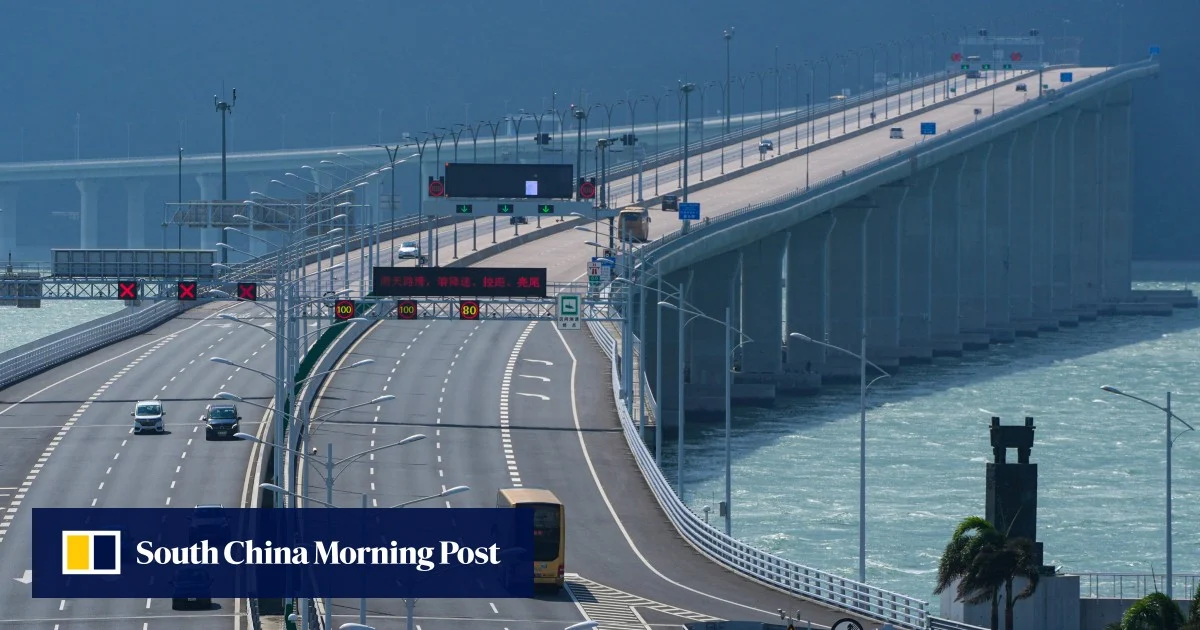Published on
November 17, 2025
According to the Hong Kong Tourism Board, Hong Kong has officially recorded a 12% year-on-year increase in visitor arrivals in the first 10 months of 2025, with about 41 million tourists entering the city between January and October. This unprecedented growth in tourism volumes testifies to the continued recovery and rise of Hong Kong as one of the world’s major tourist destinations, even as the city further expands its tourism offerings and develops infrastructure to support more visitors.
This increase has come amidst continued global economic uncertainties, yet Hong Kong remains resilient, driven largely by its strong ties to mainland China and evolving appeal to international tourists. The city’s ability to attract both short-haul and long-haul travelers reflects the growing diversification in Hong Kong’s tourism market, from traditional business and leisure travel to niche cultural experiences.
Mainland Chinese Visitors Continue to Dominate, but International Arrivals Show Strong Growth
While mainland Chinese visitors continue to account for the lion’s share of tourists, with 31.44 million visits representing 76.6% of total arrivals, the growth in non-mainland visitors is noteworthy. 9.62 million overseas travelers visited Hong Kong, marking a 16% increase over the previous year. This uptick in international arrivals is a strong indicator of Hong Kong’s growing stature as a year-round global tourism destination.
The increased tourism demand from regions such as Taiwan, Australia, and the Middle East reflects a broader appeal beyond its traditional visitor base. These regions have also contributed to long-haul tourism growth, driving the increase in flights, hotel bookings, and tourism services across the city. Hong Kong’s ability to attract these markets demonstrates its position as an attractive destination not only for short getaways but also for those seeking more immersive and longer travel experiences.
Short-Haul and Long-Haul Travel Growth: A Balanced Tourism Landscape
The growth of both short-haul and long-haul travel underlines Hong Kong’s expanding role as a regional and international gateway. The short-haul segment—comprising 5.25 million trips—saw an 18% year-on-year increase, driven by neighboring markets like China, Japan, South Korea, and Southeast Asia. These travelers are drawn to Hong Kong’s vibrant city life, shopping districts, cultural landmarks, and culinary offerings, making it a prime destination for quick getaways.
Meanwhile, long-haul travel also saw a 19% rise, reaching 2.78 million trips, highlighting the increasing demand from Europe, North America, and other distant regions. With global air connectivity improving, Hong Kong continues to attract travelers looking for cultural enrichment, luxury tourism, and access to Asia’s major business hubs. This steady increase in long-haul tourism signals Hong Kong’s emergence as a global travel hub, linking Europe, Asia, and the Americas.
Provisional October Figures: Visitor Growth Sustained
Provisional data for October 2025 shows that Hong Kong continues to attract increasing numbers of visitors. With 4.6 million arrivals for the month, this represents another 12% increase compared to October 2024. The months of September and October are traditionally peak travel periods, and the increase in visitors during this time further illustrates the sustained momentum of Hong Kong’s tourism recovery.
In particular, the city has seen strong growth in visitors from Taiwan, Australia, and the Middle East, which reflects the effectiveness of the tourism strategies employed by Hong Kong’s tourism authorities. The increased tourist volume is not only beneficial for Hong Kong’s hotels, restaurants, and shopping districts but also underscores the city’s growing status as a major international destination.
Tourism Development Plan: Strengthening Hong Kong’s Position as a World-Class Destination
To support this surge in tourism, the Culture, Sports, and Tourism Bureau has introduced an ambitious Tourism Development Blueprint, with 133 initiatives designed to strengthen Hong Kong’s position as a world-class travel destination. This blueprint emphasizes a range of projects aimed at improving Hong Kong’s tourism infrastructure, promoting local heritage, and expanding its appeal beyond traditional markets.
A key focus is the concept of “tourism everywhere,” championed by Xia Baolong, Director of the Hong Kong and Macau Affairs Office (HKMAO). This vision promotes the integration of tourism into the everyday life of the city, encouraging both locals and visitors to engage with Hong Kong’s cultural, historical, and modern attractions at all times.
The blueprint highlights a few key areas of growth, including panda-related tourism, horse racing experiences, and mega-events such as international festivals, sports events, and cultural celebrations. With an estimated economic contribution of HK$120 billion once fully implemented, these initiatives promise to elevate Hong Kong’s tourism sector, offering even more to visitors in terms of unique experiences and entertainment.
In-Depth Urban Exploration and Cultural Immersion: The New Focus
As part of the tourism blueprint, in-depth urban exploration has become a focal point of tourism development in Hong Kong. The city’s rich history, heritage, and modern urbanism make it an ideal destination for experiential travel, with visitors increasingly seeking immersive and culturally rich experiences. Hong Kong has launched initiatives featuring nine major projects with well-known industrial brands like Lee Kum Kee, Kee Wah, Pat Chun, and Yakult, offering factory tours and brand experiences for visitors.
Additionally, Hong Kong’s iconic peaks—The Peak, Lantau Peak, Sai Kung Hoi, and Tai Mo Shan—are being promoted for their stunning scenic views and cultural significance, providing a new way for tourists to explore the city beyond the typical shopping and dining experiences.
Long-Term Economic Impact: Tourism as a Driver of Sustainable Growth
Tourism is a critical component of Hong Kong’s economic recovery and growth, with visitor spending driving revenue in sectors such as hospitality, transportation, retail, and entertainment. The steady growth in both short-haul and long-haul tourism indicates that Hong Kong is well-positioned to remain a leading global tourism destination in the long term.
In addition to economic benefits, tourism also fosters cultural exchange, enhances global awareness of Hong Kong’s unique offerings, and contributes to building international relationships. As Hong Kong continues to welcome travelers from around the world, the economic impact of tourism will continue to expand, generating jobs, improving local services, and boosting the city’s global profile.
Hong Kong’s Bright Future as a Global Tourism Leader
The remarkable 12% year-on-year growth in arrivals in 2025 underlines the continued resilience of Hong Kong’s tourism market, increasingly attractive to a mix of both Mainland Chinese and international visitors. With focused marketing efforts and an appropriate tourism development strategy, Hong Kong will be well-positioned to reinforce its global tourism leadership.
As Hong Kong evolves into an all-year-round destination with a greater emphasis on sustainable tourism, deeper cultural engagement, and urban exploration, the future looks bright for both the city’s tourism industry and local communities. With better international arrival numbers and improved experiences within the tourism sector, Hong Kong will remain among the world’s top travel destinations, creating lifelong memories for visitors around the world.



